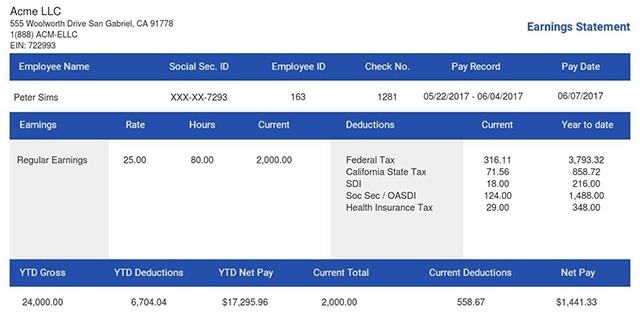1099 vs W2 Employees: Choosing the Right Hire for Your Business
There are two categories of employees on the IRS form used while reporting: The 1099 vs W2 employees. They are quite different, but it’s easy to misclassify these employees. This mistake can lead to financial and legal penalties.
Therefore, as an employer, you must understand the differences between the two categories. This eventually helps you decide where your employees specifically fit.
This article helps you understand 1099 vs W2 better. It explains how a 1099 worker differs from a W-2 employee. It also covers their roles, pros and cons, and payroll tax responsibilities.
What Are 1099 vs W2 Workers?
Below explains both terms in detail:
1099 Worker
A 1099 worker is an independent contractor or a freelancer. They are individuals usually hired on a contract basis to perform a specific task or service. Independent contractors have multiple clients they work with.
The term "1099 workers" comes from the 1099-NEC tax form. This form is used to report income earned by independent contractors. They are also responsible for paying their taxes and do not receive any employee benefits whatsoever.
The 1099 form is a record of income that you're paid as an independent contractor. Let's say you're a freelancer or own a business; you're supposed to be given 1099 forms from your client. This is because the IRS requires Form 1099 to be issued to you if they pay you at least $600 annually. Depending on your sources of income, you may be given different 1099 forms to track your income.
Examples of independent contractors include:
-
Freelance writers and editors
-
Graphic Designers
-
Software Developers
-
Consultants
-
Photographers and Videographers
-
Construction Workers & Tradespeople
W-2 Employee
A W-2 employee is an employee on a payroll. Employers usually hire these employees to work in their organization with a position of employment. Therefore, they are on the organization's payroll for as long as they work there.
W-2 refers to the form used to report employee wages, tips, and other compensation employers pay. W-2 employees get benefits like healthcare, retirement plans, and paid time off. It can also include employment benefits paid by employers, which is required by law. Sometimes, it is also given as part of the employment agreement.
A W-2 form shows how much money an employee earns during the year. You can use this form to calculate your adjusted gross income as an employee. A W-2 form shows your tax withholdings for the year, which includes your federal and state taxes. This form allows you to know how much you were paid. You'll also know how much you submit to the IRS and your state in taxes.
Examples of W-2 employees include:
-
Employees of an organization
-
Administrative Assistants
-
Customer Service Representatives
-
Factory workers
-
Waiters
Key Differences Between 1099 vs W2 Employees
To understand W2 or 1099 better, you'll need to understand the differences between 1099 vs W2 employees. These employees are different in terms of management, taxes and benefits:
-
Employee Management: A 1099 worker does not work directly for any employer. Since they work for multiple clients, they could have different work schedules. They handle tasks or projects in their own ways. This lets them choose their work schedule for each one.
On the other hand, W-2 employees work directly under an organization. They have a direct employer-employee relationship in the organization in which they work. Employees receive a set paycheck and taxes withheld from their employer within a specific work period.
-
Taxes: In terms of taxes, 1099 workers are in charge of filing their taxes. They do not have any taxes withheld, as they do not have it. Meanwhile, employers usually withhold W-2 employee taxes. They do this while remitting their federal and state taxes.
-
Employee Benefits: 1099 employees do not enjoy employee benefits. This is due to the fact that they are not working under any organization or company. W-2 employees, however, get to enjoy employee and social benefits. These are benefits that are offered to them by their employers. It includes insurance, healthcare, 401k benefits, vacation time, and many more.
Pros and Cons of 1099 vs W2 Employees
Here are some of the pros and cons of 1099 and W2 employees:
Pros of 1099 Workers/Independent Contractors
-
More Flexibility: 1099 workers fit well for specific jobs. Independent employees work on a contract. This makes it easy for clients to hire them for a set time. The employers can choose how long they want to work with them and end the contract when it is completed.
-
Specialized Workers: 1099 workers are specialized. This makes it easy to select someone with a specific skill. They work well for some projects, which helps companies choose workers quickly.
Cons of 1099 Workers
-
Limited commitment: Independent contractors often serve multiple clients. They aren't tied to one company.
-
Less control: Since contractors run their own businesses, employers have little control over what they do. This reduces the chances of ensuring that they comply with company policies.
Pros of W-2 Employees
-
Better Control: Employers have more control over their workers. How they control their employees dictates work quality and productivity. Employers can implement high standards of work and operations. This can lead to better output.
-
Continuous Support: Independent workers work for a particular period or contract. W-2 employees don't have the same agreement. W-2 employers work for companies or organizations without any time frame. It can be years, but in the long term, there is continuous support, promoting cooperation and collaboration from the employees.
Cons of W-2 Employees
-
High Cost: Keeping W-2 employees on payroll is quite expensive. Employers essentially need to pay the employee wages, benefits, compensations and other charges. This makes it quite high for organizations and companies.
-
Managing Employees: It is very stressful to manage an organization's employees. Unlike 1099 workers whom you do not need to manage, W-2 employees must be managed. This involves scheduling employee work. It also involves ensuring they are well-trained and on track. That can be stressful for employers.
W2 vs 1099 Taxes: Tax Implications for Both Workers and Businesses
For W2 vs. 1099 taxes, workers and businesses are different regarding their tax status. Tax withholding is the main difference between 1099 employees and W-2 employees. Employers usually remit payment of W-2 employees' taxes. At the same time, 1099 workers remit payment of their taxes themselves. They pay their estimated tax every quarter so that they won't face penalties.
If they make more than $400, they pay self-employment tax, which involves the payment of Social Security and Medicare tax. 1099 workers can deduct business expenses, home office costs, and some health care expenses. W-2 employees are not allowed such benefits.
Businesses manage taxes differently for W-2 employees and 1099 workers. For W-2 employees, employers withhold federal and state income taxes. This depends on the employee’s W-4 form and their Social Security and Medicare taxes.
For 1099 workers, businesses don't withhold taxes unless backup withholding is needed. They also do not pay FUTA or the employer share of Social Security and Medicare taxes. 1099 workers pay these through self-employment tax. Businesses must get a W-9 when they employ a 1099 worker. Then, they'll need to send a 1099-NEC form at the start of each year.
Final Thoughts
When deciding which to choose between a 1099 vs W2 employee, you need to consider some factors. For example, employing a W-2 employee will be beneficial if the work involves ongoing jobs. However, a 1099 worker would be better for short or specific jobs. You should also consider their compensation. While 1099 workers set their own rates, W-2 employees are paid with wages, benefits, and employer contributions towards taxes. Knowing these factors breaks down the job and helps you choose right.
Once you decide which to choose, ensuring accurate payroll management is essential. This is where we get the job done with our easy paystub generator! It creates paystubs and ensures better accuracy with every paycheck. Create your paystubs with us now and make payroll easier for you.















